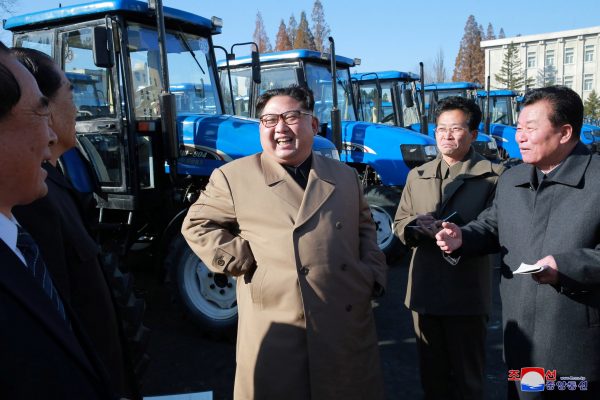Happenings in trade between North Korea and China are sometimes taken as a clear indication of a change in Chinese policy that does not exist.
When media outlets learned about a several day closure of the bridge between the Chinese city of Dandong and the North Korean city of Sinuiju, some took it as a sign that China was cracking down on trade with North Korea. Some took it even further to mean that China was punishing North Korea for its nuclear and missiles tests. Like news on trade, too much was made of this news. Closing the bridge down for (badly needed) repairs in December (when trade volumes are relatively low) is a sign that Chinese authorities are eager not to disrupt traffic flows.
That said, 2017 saw actual and clear change in North Korea’s economic conditions, the full impacts of which are hard to know. North Korea has begun to feel the pressure of international economic sanctions. This is one of the first times this has happened since the first UN sanctions were implemented to punish it for weapons development in 2006. The opportunity cost from sanctions has been significant in the past as well, but direct pressure is a different thing. China has moved from simply acquiescing to sanctions to implementing them in a way that hurts North Korea. China fears that a US military intervention on the Korean Peninsula would destabilise the region and threaten its geopolitical influence.
This is not a disaster for North Korea, at least not for now. The country has been under a range of international sanctions over its weapons development since 2006. Even before 2006, North Korea had decades of experience in raising hard currency outside formal trade frameworks — not least through its sales and transfers of illicit goods such as weapons and narcotics. Traders along the Chinese–North Korean border often respond to heightened pressure by finding new ways to conduct their business rather than ceasing their activities.
North Korea has likely planned on and accounted for most sanctions that have been implemented thus far, but this does not mean trading has not gotten more difficult. When traders have to find new ways to ‘go under the radar’, there is an increase in transaction costs (the time, effort and resources needed to conduct economic exchange). For North Koreans who export coal, seafood and textiles — three goods whose imports are essentially banned by sanctions — business has been badly hurt, which has reportedly resulted in substantial job losses.
In short, 2017 was a challenging year for the North Korean economy. In 2018, there will be several trends to watch out for.
First, North Korea will likely continue to emphasise domestic production. As sanctions ramp up, domestic manufacturing is likely to gain more traction as a way to achieve self-reliance and potentially to export products not covered by sanctions. North Korean media has strongly emphasised domestic production over the last few years (particularly the production of consumer goods). This shift towards domestic production will likely continue in 2018. Increasing exports will be immensely challenging for North Korea given its external environment and the comparatively low quality of its products, but the regime may still try.
Second, the role Russia plays in the North Korean economy may grow in relative importance. It is important to remember that this trend would come from a relatively low level. Even so, Russia’s historic and current ties with North Korea are vaster than many think. Some defectors claim that a much larger share of the oil products that North Korea imports come from Russia.
In December 2017, gasoline prices dropped in North Korea and some suggest that increased Russian exports were behind the drop in prices. These reports are not confirmed, but the fact that Russia’s Minister for Far Eastern Development set a goal in 2015 to achieve a tenfold increase in trade with North Korea by 2020 should be enough to warrant keeping an eye on Russia’s role.
Third, the North Korean regime will likely continue to develop the framework of a market economy. The idea of markets as an ‘anti-state’ force has largely given way to a reality where they serve as part of the official economic framework (in which they are taxed and regulated by the government).
In all discussions about the North Korean economy, it must be remembered that North Korea has a deeply dysfunctional system with structural flaws that inhibit its economic growth. This fact did not change in 2017 and is not likely to change drastically in 2018 either.
Benjamin Katzeff Silberstein is an Associate Scholar with the Foreign Policy Research Institute, co-editor of North Korean Economy Watch and a Doctoral Candidate in the Department of History at the University of Pennsylvania.
This article is part of an EAF special feature series on 2017 in review and the year ahead.

